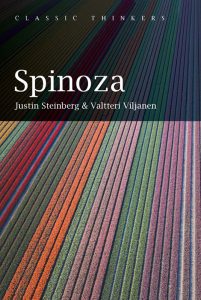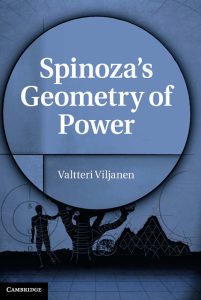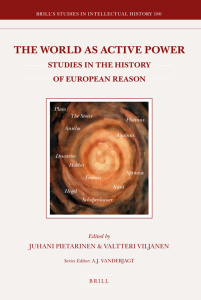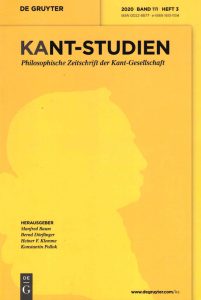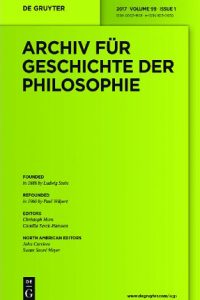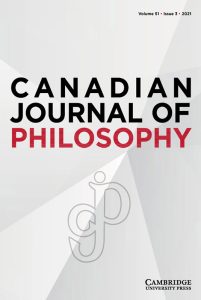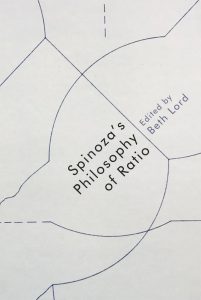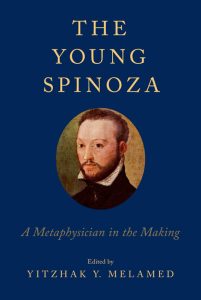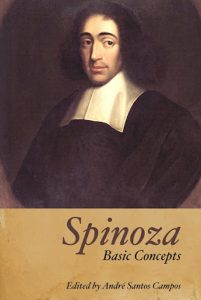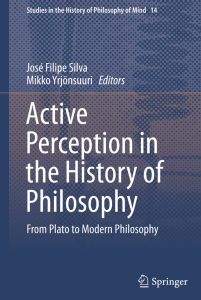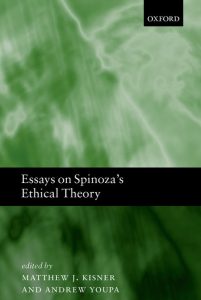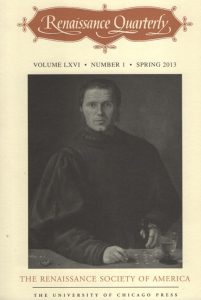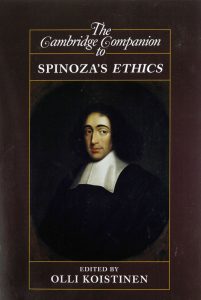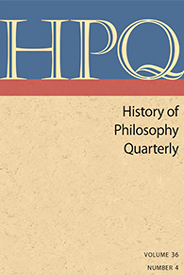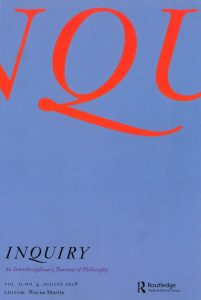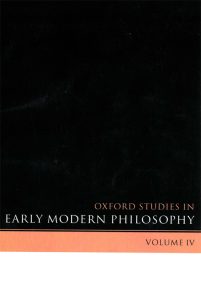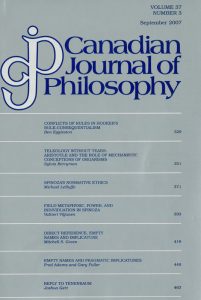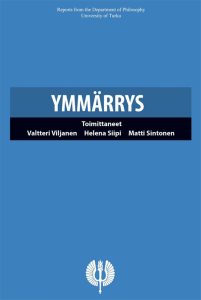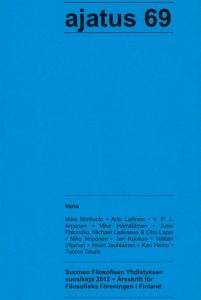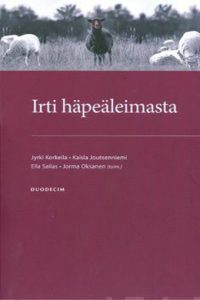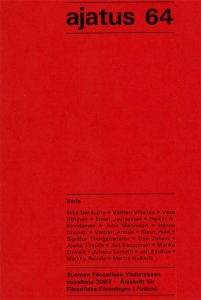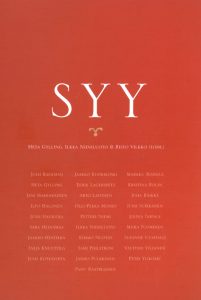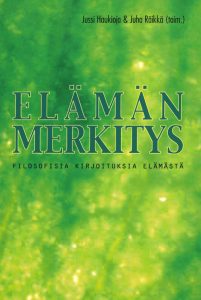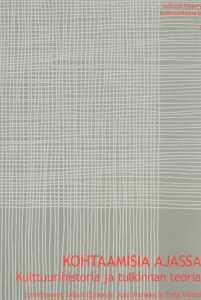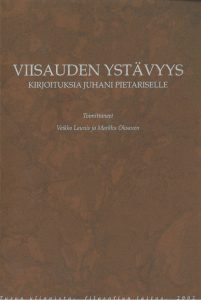“Why Essences: Spinoza.” In Jan Forsman and Matias Slavov (eds.), Contemporary Perspectives and Historical Dimensions, 236–51. Tampere: Tampere University, 2025.
This essay attempts to answer a simple but largely neglected elemental question: why does Spinoza endorse essences? I begin by delineating three perennial metaphysical problems, namely those of individuation, change, and persistence, after which I analyze the way in which they function as the deeply ingrained backdrop that motivates Spinoza’s essentialism, allowing him to develop a sophisticated conceptual framework on which he builds his ethics proper. I end by discussing the relationship between Spinoza’s essentialism and modality and argue that while Spinoza anticipates certain contemporary lines of thought, giving an account of modality is not high on his agenda: his necessitarianism is a by-product of building a philosophical system motivated by other metaphysical concerns.
Here are my five entries in The Cambridge Spinoza Lexicon, edited by Karolina Hübner and Justin Steinberg (Cambridge: Cambridge University Press, 2025):
“Cheerfulness,” (pp. 85–86).
“Goethe, Johann Wolfgang von (1749–1832),” (pp. 210–211).
“Pantheism Controversy,” (pp. 404–406).
“Schopenhauer, Arthur (1788–1860),” (pp. 480–481).
“Striving,” (pp. 503–507).
“Locke on Freedom, Moral Agency, and the Space of Reasons.” Locke Studies 2024, 24: 1–20.
In this paper I argue that what interests Locke most is not whether we are free to suspend desire but the nature of the liberty that suspension grants us, and that Lockean liberty is essentially about deliberation that takes place in what has nowadays come to be called the space of reasons. This allows me to offer a novel and balanced account that carefully designates both causal and rational elements of Locke’s theory of moral agency: after having reached judgment concerning the best course of action, we are to take measures, if need be, so that this cognitive achievement raises the corresponding conative element, namely an uneasiness that determines our will. Locke’s ambitious theory intends to incorporate two strong philosophical intuitions widely held incompatible: that our will is free and that impulses have an effect on our choices.
“The Early Modern Rationalists and Substantial Form: From Natural Philosophy to Metaphysics.” Journal of Early Modern Studies 2024, 13 (2): 37–62.
In this paper I argue that, contrary to what one might think, early modern rationalism displays an increasing and well-grounded sensitivity to certain metaphysical questions substantial form was designed to answer—despite the fact that the notion itself was in such disrepute, and emphatically banished from natural philosophy. This main thesis is established by examining the thought of Descartes, Spinoza, and Leibniz through the framework constituted by what have been designated as the two aspects, metaphysical and physical, of substantial form. This examination shows that Descartes ends up assigning to soul a notable metaphysical task formerly assigned to substantial form, whereas Spinoza advances a theory of essences motivated by the philosophical concerns behind the two aspects of substantial form. Leibniz finally makes a sharp distinction between natural philosophy and metaphysics as he develops a dynamistic theory that deliberately aims at understanding substantial form in a new fashion. This line of development is designated as one major factor contributing to the separation of philosophy and natural science.
With Peter Myrdal and Arto Repo: “Leibniz on Possibilia, Creation, and the Reality of Essences.” Philosophers’ Imprint 2023, 23 (17): 1–17.
This paper reconsiders Leibniz’s conception of the nature of possible things and offers a novel interpretation of the actualization of possible substances. This requires analyzing a largely neglected notion, the reality of individual essences. Thus far scholars have tended to construe essences as representational items in God’s intellect. We acknowledge that finite essences have being in the divine intellect but insist that they are also grounded in the infinite essence of God, as limitations of it. Indeed, we show that it is critical to understand that this dependence on God’s essence is prior to the dependence on God through divine ideas. Here it is crucial to distinguish questions concerning the ontological status of essences from questions concerning their reality. This yields a fresh view of Leibniz’s theory of creation, which takes seriously his claim that the same thing is first a mere possibility but after creation an actually existent substance.
“Why Virtue Is not Quite Enough: Descartes on Attaining Happiness.” Archiv für Geschichte der Philosophie 2021, 103 (1): 54–69.
Descartes explicitly states that virtue is sufficient for attaining happiness. In this paper I argue that, within the framework he develops, this is not exactly true: more than virtuous action is needed to secure happiness. I begin by analyzing the Cartesian notion of virtue in order to show the way in which it closely connects to what, for Descartes, forms the very essence of morality—the correct use of our free will. After that I discuss Descartes’s view of happiness and its relation to the highest good. Thereby is laid the foundation for offering a reconstruction of the argument that virtue leads to
happiness. I conclude by suggesting how and why Descartes leaves a crucial premise—an intellectual insight that consists of three main elements—unmentioned when he claims that virtue is sufficient for happiness.
“Kant on Moral Agency: Beyond the Incorporation Thesis.” Kant-Studien 2020, 111 (3): 423–44.
In this paper I aim to discern the limits of the highly influential Incorporation Thesis to give proper weight to our sensuous side in Kant’s theory of moral action. I first examine the view of the faculties underpinning the theory, which allows me to outline the passage from natural to rational action. This enables me to designate the factors involved in actual human agency and thereby to show that, contrary to what the Incorporation Thesis may tempt one to believe, we do not always act on maxims. The result is a revised and more balanced view of how Kant sees the character of moral life.
[Here is the version containing the Cambridge Edition English translations of the primary source quotations.]
“The Young Spinoza on Scepticism, Truth, and Method.” Canadian Journal of Philosophy 2020, 50 (1): 130–42.
In this paper I offer a new interpretation of the young Spinoza’s method of distinguishing the true ideas from the false, which shows that his answer to the sceptic is not a failure. This method combines analysis and synthesis as follows: if we can say of the object of an idea (a) which simple things underlie it, (b) how it can be constructed out of simple elements, and (c) what properties it has after it has been produced, doubt concerning the object simply makes no sense. The paper also suggests a way in which this methodology connects to the ontology of the Ethics.
“Spinoza on Activity and Passivity: The Problematic Definition Revisited.” In Martina Reuter and Frans Svensson (eds.), Mind, Body and Morality: New Perspectives on Descartes and Spinoza, 157–74. London: Routledge, 2019.
In this essay I take a fresh look at 3d2 of Spinoza’s Ethics according to which “we act when something happens, in us or outside us, of which we are the adequate cause,” whereas we are passive “when something happens in us, or something follows from our nature, of which we are only a partial cause.” The definition of activity has puzzled scholars: how can we be an adequate, i.e. complete, cause of an effect outside us (which clearly involves other causal factors as well)? However, the definition of passivity is hardly unproblematic either: how can something follow from the patient’s nature so that the patient can nevertheless be considered only a partial cause? I argue that unraveling the problem of activity requires taking properly into account the distinction between immanent and transeunt causality. As for the problem of passivity, I argue that Spinoza’s geometry-inspired theory of essence constitution offers the key to understanding the nature of passions.
“Spinoza’s Ontology Geometrically Illustrated: A Reading of Ethics IIP8S.” In Beth Lord (ed.), Spinoza’s Philosophy of Ratio, 5–18. Edinburgh: Edinburgh University Press, 2018.
In this essay I offer an in-depth reading of the geometrical illustration of Ethics IIP8S and show how it can be used to explicate the whole architecture of Spinoza’s system by specifying the way in which all the key structural features of his basic ontology find their analogies in the example. The illustration can also throw light on Spinoza’s ontology of finite things and inform us about what is at stake when we form universal ideas. In general, my reading of IIP8S thus elucidates what it means, for Spinoza, to think geometrically or to consider geometry as a model: fundamentally, geometricity is not a form of exposition but the way in which reality itself is structured.
“Spinoza’s Essentialism in the Short Treatise.” In Yitzhak Y. Melamed (ed.), The Young Spinoza: A Metaphysician in the Making, 183–95. Oxford: Oxford University Press, 2015.
In this essay I trace the rather consistent essentialist thread that runs through the whole Short Treatise. This allows us not only to better understand the work itself but also to obtain a firmer grasp of the nature of Spinoza’s entire philosophical enterprise. In many ways, the essentialism we find in the Short Treatise is in line with Spinoza’s mature thought; but there are also significant differences, and discerning them throws light on the development of Spinoza’s philosophy.
“Theory of Conatus.” In André Santos Campos (ed.), Spinoza: Basic Concepts, 95–105. Exeter: Imprint Academic, 2015.
In this essay, I begin by delineating the context of the conatus principle, after which I will provide a reading of the two propositions (E3p6 and p7) that contain the very core of the theory. This in turn will enable me to explain how Spinoza’s theory of conatus is connected to his views on desire, activity, and teleology.
“Spinoza on Virtue and Eternity.” In Matthew J. Kisner and Andrew Youpa (eds.), Essays on Spinoza’s Ethical Theory, 258–71. Oxford: Oxford University Press, 2014.
The goal of this essay is twofold. First, I will explicate the dynamic nature of Spinoza’s doctrine of virtue by discerning his reasons for defining virtuousness in terms of active power. Second, by taking this understanding of virtue as the point of departure, I will suggest a sense in which we can be said to be more or less eternal to the extent that we are virtuous and active. Spinoza’s specific brand of essentialism underpins both his doctrine of virtue and that of eternity, and reaching these goals requires discussing the two kinds of essences which hold a prominent place in the Ethics: the formal and the actual essences. This, in turn, allows us to throw some new light on the relationship between eternal and durational existence, the distinction between which forms the very backbone of Spinoza’s system.
“Spinoza on Activity in Sense Perception.” In José Filipe Silva and Mikko Yrjönsuuri (eds.), Active Perception in the History of Philosophy: From Plato to Modern Philosophy, 241–54. Dordrecht: Springer, 2014.
There can be little disagreement about whether ideas of sense perception are, for Spinoza, to be classed as passions or actions—the former is obviously the correct answer. All this, however, does not mean that sense perception would be, for Spinoza, completely passive. In this essay I argue argues that there is in the Ethics an elaborate—and previously unacknowledged—line of reasoning according to which sense perception of finite things never fails to contain a definite active component. This argument for activity in sense perception consists of two main parts: first, that ideas we form through sense perception have something adequate in them; second, that the adequate component is actively brought about. Discerning this line of thought connects to—and sheds some new light on—Spinoza’s general way of understanding ideas as entities involving activity.
“Causal Efficacy of Representational Content in Spinoza.” History of Philosophy Quarterly 2010, 27 (1): 17–34.
Jonathan Bennett has argued that because of his basic ontology, Spinoza cannot but reject thoughtful teleology: for Spinoza, a particular idea is a modification of the thinking substance the object of which is a certain modification of the extended substance; thus, there is no room in Spinoza’s system for a key ingredient in thoughtful teleology, the tenet that representative content of ideas is causally efficacious. In this paper I present Bennett’s argument, take up the ways in which it has been discussed and found wanting, argue that Bennett’s position really is something that should not be endorsed. I then offer an analysis of the nature of the argument and the ensuing discussion with the aim of discerning the philosophical source from which Bennett’s interpretation draws its force.
“Schopenhauer’s Twofold Dynamism.” In Juhani Pietarinen and Valtteri Viljanen (eds.), The World as Active Power, 305–30. Leiden: Brill, 2009.
In this essay I examine the context provided by early modern thinkers to show that Schopenhauer’s system is based on an elaborate theory in which the concepts of force and striving play a key role, and that this underpins a line of thought essentially dynamistic in character both with regard to phenomenal and noumenal realms. Understanding Schopenhauer’s twofold dynamism and its conceptual architecture allows us not only to gain insight into the nature of his metaphysical enterprise by designating its place within the context of this book, but also to obtain a better grasp of his view of the relationship between the noumenal and phenomenal realms. I also suggest a reading of Schopenhauer’s doctrine of the phenomenal world in which it is interpreted as a dynamic field of matter.
With Arto Repo: “Leibniz on Force, Activity, and Passivity.” In Juhani Pietarinen and Valtteri Viljanen (eds.), The World as Active Power, 229–50. Leiden: Brill, 2009.
Our examination explicates not only how Leibniz’s emphasis on force or power squares well with (and most probably largely stems from) his endorsement of certain central Aristotelian tenets, but also how the concept of force is incorporated into his mature idealist metaphysics. That metaphysics, in turn, generates some thorny problems with regard to the concept of passivity; and so we shall also ask whether and how Leibniz’s monadology, emphasizing the activity as much as it does, is able to encompass the passivity of created substances.
“Spinoza’s Actualist Model of Power.” In Juhani Pietarinen and Valtteri Viljanen (eds.), The World as Active Power, 213–28. Leiden: Brill, 2009.
In addition to the notion of power (potentia), Spinoza employs the notion of power of acting (agendi potentia), especially in the Ethics. This raises the question, if Spinoza uses both ‘power’ and ‘power of acting’, what is the difference between the two? What else could power be, for Spinoza, but power of acting? What is the relationship between power and activity in his system? This essays aims at giving answers to these questions; thereby emerges what may be called an actualist model of God’s power.
“Spinoza’s Ontology.” In Olli Koistinen (ed.), The Cambridge Companion to Spinoza’s Ethics, 56–78. Cambridge University Press, 2009.
In this essay I start by considering the relationship between the concepts of substance and mode; my aim is to show that despite his somewhat peculiar vocabulary there is much here that we should find rather familiar and intelligible, as Spinoza’s understanding of these matters harks back to the traditional distinction of substance and accident, or thing and property. After this I move on to fitting the concept of attribute into Spinoza’s conceptual architecture, and then examine the implications concerning real existents and causation that Spinoza sees these fundamental conceptual commitments as having. The most startling of these implications is of course his monism, according to which there is only one substance. Through this examination it becomes clear that it is only when Spinoza makes the transition from considerations concerning concepts to existential claims that the collision with what was previously commonly accepted becomes inevitable.
“On the Derivation and Meaning of Spinoza’s Conatus Doctrine.” Oxford Studies in Early Modern Philosophy 2008, 4: 89–112.
In this paper I begin by discussing the different ways in which Spinoza’s famous conatus argument has been understood, after which I present my own reconstruction of the derivation: each and every true finite thing is, in itself, an expresser of power (E1p25c, 1p34) that never acts self-destructively (E3p4) but instead strives to drive itself through opponents to produce effects as they follow from the definition of the thing in question (E1p25c, 1p34, and 3p5). This tells us something decisive about the meaning of Spinoza’s doctrine: according to it, things are active causers whose “power to exist and act” has conatus character in temporality, amounting not only to striving to prolong the duration of one’s actualization but also to striving to be as active or autonomous as possible, that is, to attain a state determined by the striving subject’s essence alone.
“Spinoza’s Essentialist Model of Causation.” Inquiry 2008, 51 (4): 412–37.
Spinoza is most often seen as a stern advocate of mechanistic efficient causation, but examining his philosophy in relation to the Aristotelian tradition reveals this view to be misleading: some key passages of the Ethics resemble so much what Suárez writes about emanation that it is most natural to situate Spinoza’s theory of causation not in the context of the mechanical sciences but in that of a late scholastic doctrine of the emanative causality of the formal cause; as taking a look at the seventeenth-century philosophy of mathematics reveals, this is in consonance also with Spinoza’s geometrical cast of mind. Against this background, I examine Spinoza’s essentialist model of causation according to which each thing has a formal character determined by the thing’s essence and what follows from that essence. In the case of real things this essential causal architecture results in efficacy, i.e. in bringing about real effects, the key idea being that without the essential, formally structured causal thrust there would be no efficacy in the first place. I also explain how this model accounts for efficient causation taking place between finite things.
“Field Metaphysic, Power, and Individuation in Spinoza.” Canadian Journal of Philosophy 2007, 37 (3): 393–418.
Spinoza developed a highly interesting metaphysical theory of nature and individuality. In this paper, I endeavor to bring forward some ideas on how Spinozistic views on extended substance, physical world, and individuality can be approached using the concept of power as the basis of interpretation. Jonathan Bennett’s ‘field metaphysical’ interpretation of Spinoza’s doctrine of one extended substance has generated much discussion, and forms the other starting point of my paper. I believe that the field metaphysical interpretation enables one to deal with the central questions concerning physical individuation—individuality and the persistence of individual being—in a rather novel way. My main question is this: what follows if physical individuals are seen as parts of a unified field of extended power?
“The Problem of Rationality in Comparing Different Forms of Life.” In Jón Ólafsson and Juha Räikkä (eds.), Rationality in Global and Local Contexts, 92–104. Reports from the Department of Philosophy, University of Turku, 2007.
In this paper, I examine some main philosophical positions taken in the discussion concerning the possibility of rational evaluation in comparing different forms of life, after which I outline a view of rational evaluation that would be as sensitive as possible to the diversity and offerings of various cultural viewpoints.
Other International Publications
“Review of Spinoza Past and Present: Essays on Spinoza, Spinozism, and Spinoza Scholarship by Wiep van Bunge.” Renaissance Quarterly 2013, 66 (3): 1053–4.
With Olli Koistinen: “Introduction.” In Olli Koistinen (ed.), The Cambridge Companion to Spinoza’s Ethics, 1–25. Cambridge University Press, 2009.
With Juhani Pietarinen: “Introduction.” In Juhani Pietarinen and Valtteri Viljanen (eds.), The World as Active Power, 1–10. Brill, 2009.

